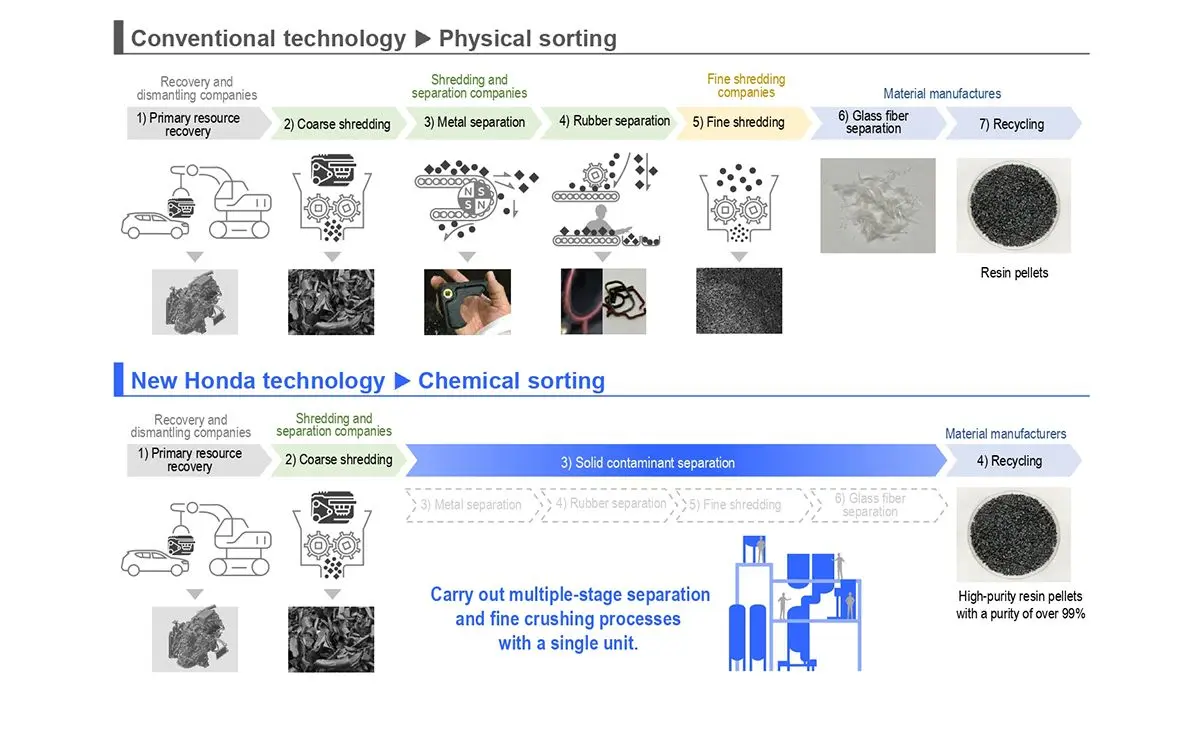Plastics are no longer just a convenience in manufacturing; they are essential. No industry demonstrates this more than the automotive market. From bumpers to dashboards, plastic auto parts are transforming the way cars are designed and built. Let’s explore how plastics are impacting auto manufacturing.
What kind of plastic is used in automobiles?
As driver needs have evolved, modern car parts have had to keep pace. Auto manufacturers have turned to plastic for its durability, impact resistance, flexibility and weight reduction. With so many needs throughout the entire vehicle, there is not just one car plastic, but nearly a dozen materials used for automotive plastic parts on the interior and exterior.
For example, because of its transparency, polycarbonate (PC) is the primary plastic used for car headlights. Car bumper material is typically polypropylene (PP) since its lightweight and flexible. And strength and heat-resistance of both polyethylene terephthalate (PET) and polyamide (PA, nylon) make them the best plastic for engine parts. Other popular materials and their properties are:
- Acrylonitrile Butadiene Styrene (ABS): tough, impact-resistant, moldable
- Polyvinyl Chloride (PVC): Flexible, durable, chemical resistant
- Polyethylene (PE): Lightweight, durable, chemical resistant
- Polyurethane (PU): Lightweight, flexible, comfortable
- Polymethyl Methacrylate (PMMA): Transparent, UV-resistant, scratch-resistant
According to the Handbook of Plastics Testing and Failure Analysis written by Vishu Shah, there are two ways we can identify plastic material in automobiles.
- Burn test
A small plastic sample is burned while things like flame color, smell and reaction are studied. Burn tests must be conducted in a well-ventilated area since they can release harmful fumes. - Density and floatation test
Various plastics are dropped into water and the type of plastic can be determined. based on how well they float.
You can also identify automotive plastic through visual assessment and advanced lab tests.
Which parts of the car are made of plastic?
Plastic Europe estimates that today’s vehicles include 2,000+ plastic car parts; that’s 12-15% of total weight and 50% of all their pieces. Automotive plastic is found in (but not limited to):
Automotive plastic parts aren’t simply limited to vehicles. Sturdy, long-lasting and lightweight plastic auto ramps — used to raise vehicles for maintenance and repairs — are replacing steel hydraulic lifts.
Why do cars use so much plastic?
There are countless reasons why automakers are increasingly turning to plastic car parts, but America’s Plastic Makers cite these as 3 of the top reasons:
- Fuel efficiency
Newton’s Second Law of Motion says “that the force required to move an object depends on its mass.” Based on that, a car with plastic auto parts needs less fuel to accelerate. In fact, the U.S. Department of Energy states that reducing a car’s weight by 10% can improve fuel economy by 6-8%. - Safety
Despite what many believe, plastic is not weaker than metal, which makes plastic vehicles safer in crashes. Some polymers, like carbon fiber-reinforced plastic (CFRP) reduce vehicle weight while absorbing three times the energy of steel (plastic: 50-150 kJ/kg; steel: 20-60 kJ/kg). In an accident, automotive plastics shatter and flex, resulting in reduced force to passengers. - Environmental impact
While fuel efficiency is a key driver to automotive sustainability, work is also being done to adopt greener manufacturing practices and resource efficiencies. This includes focusing on using biodegradable materials in vehicles, effectively managing battery recycling, using renewable energy in production facilities and 3D printing to eliminate waste.
Plastics keep things moving
As plastic technology advances, plastics are replacing traditional metals and transforming the automotive industry by making vehicles safer, fuel-efficient and lighter.







